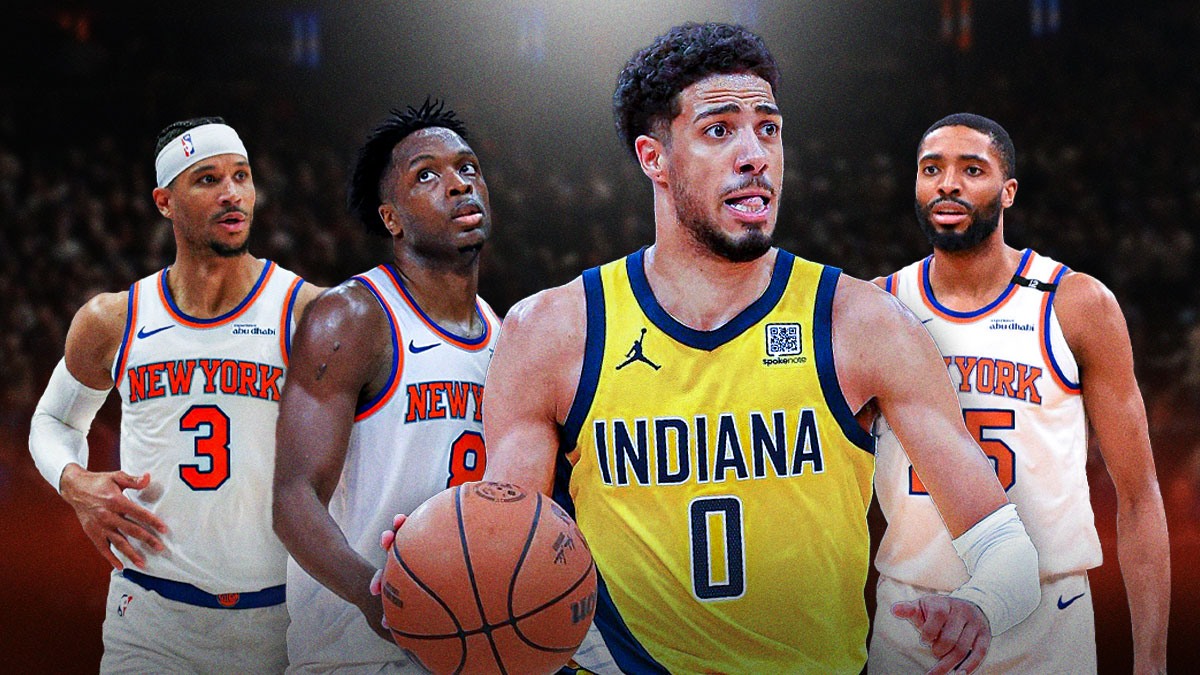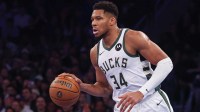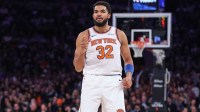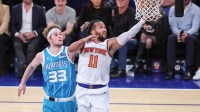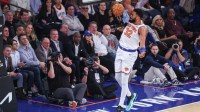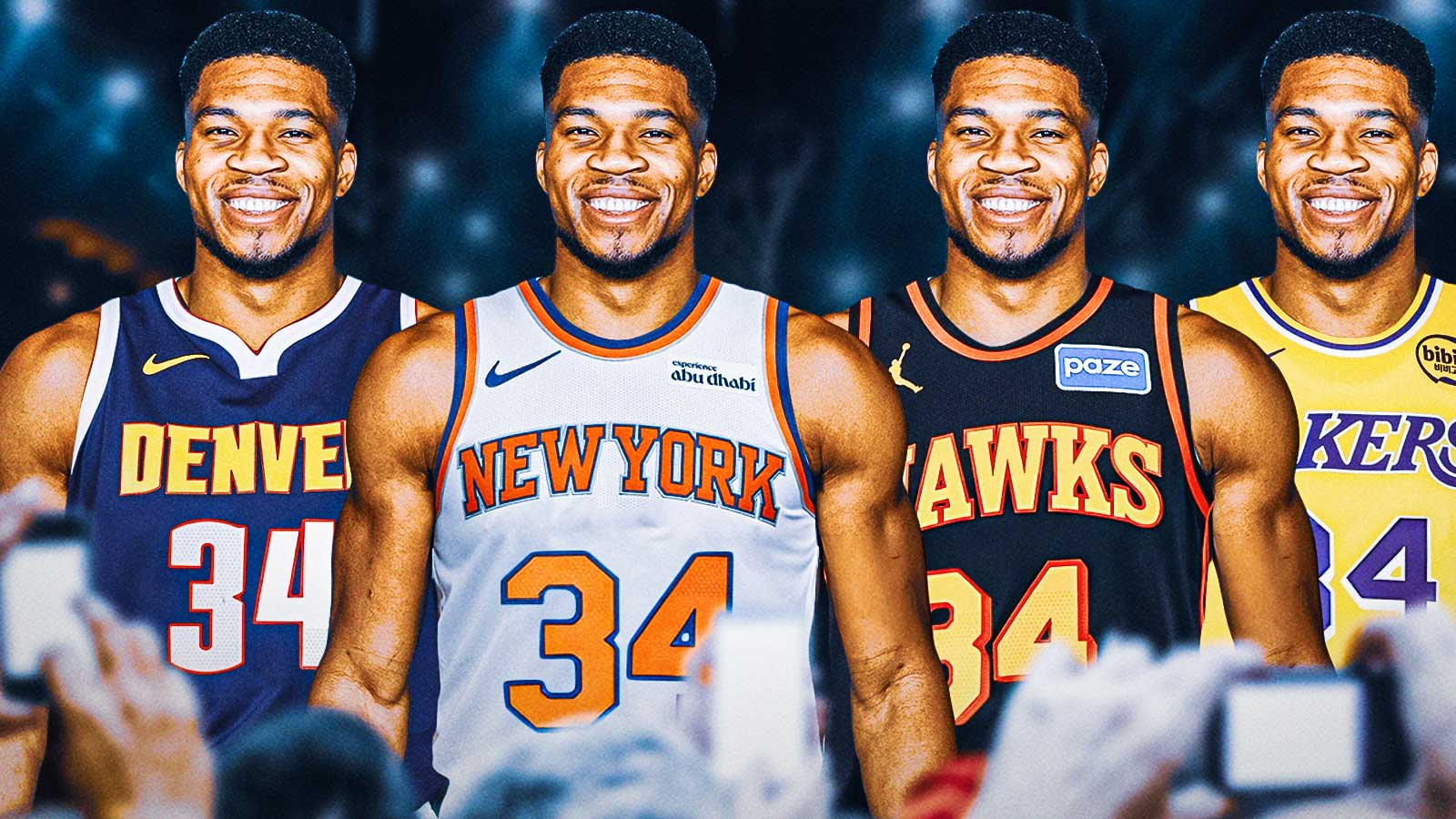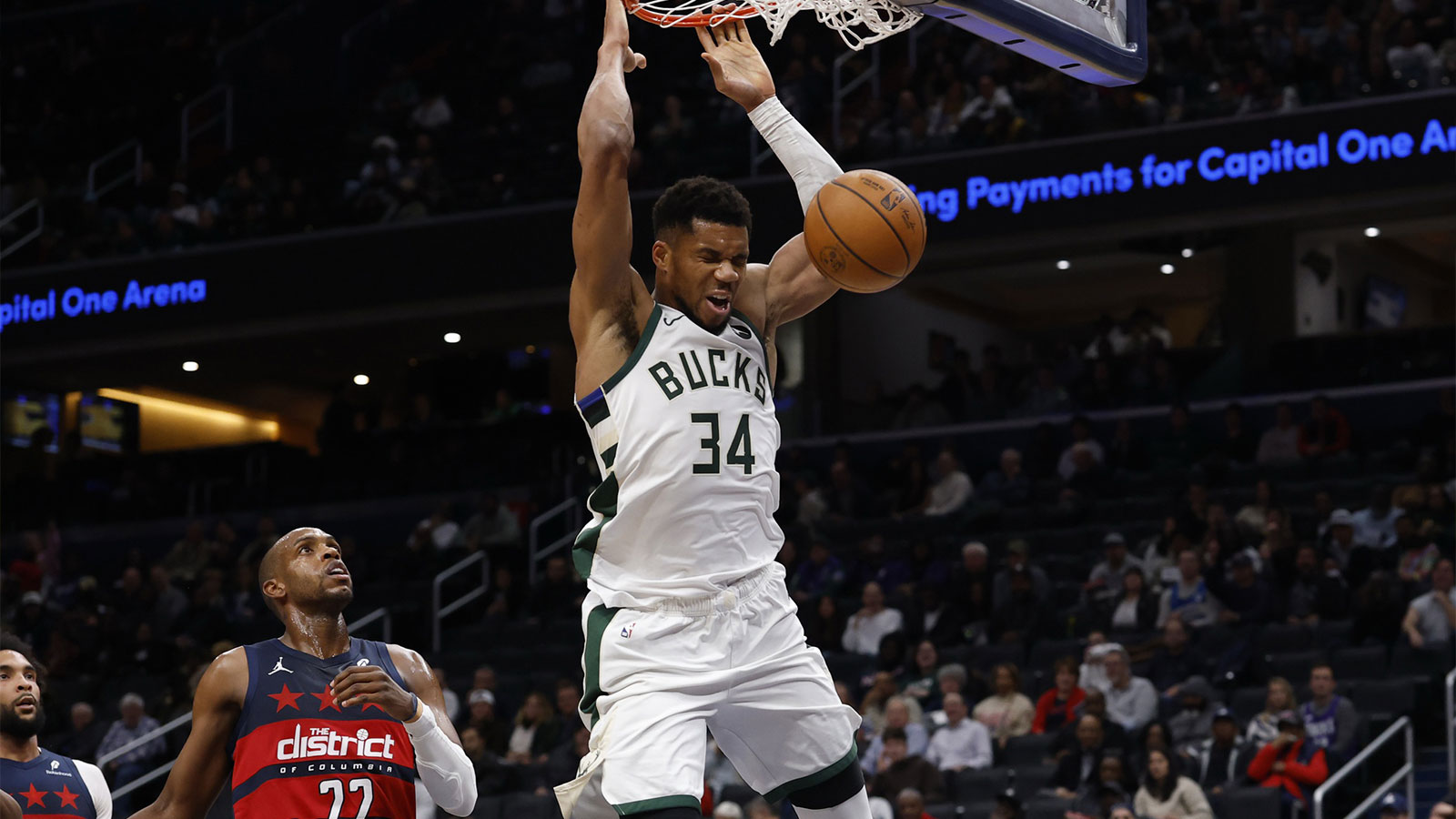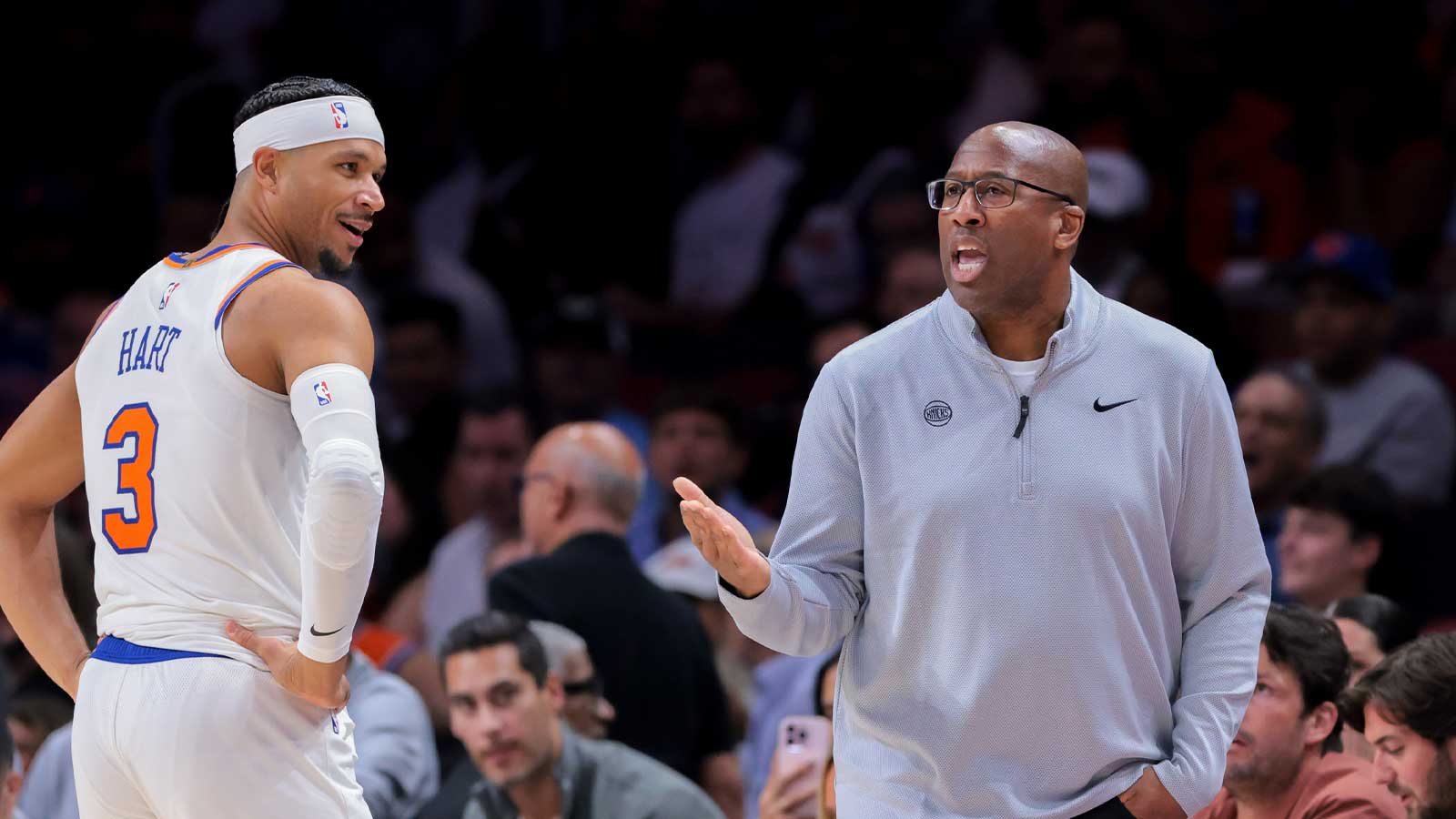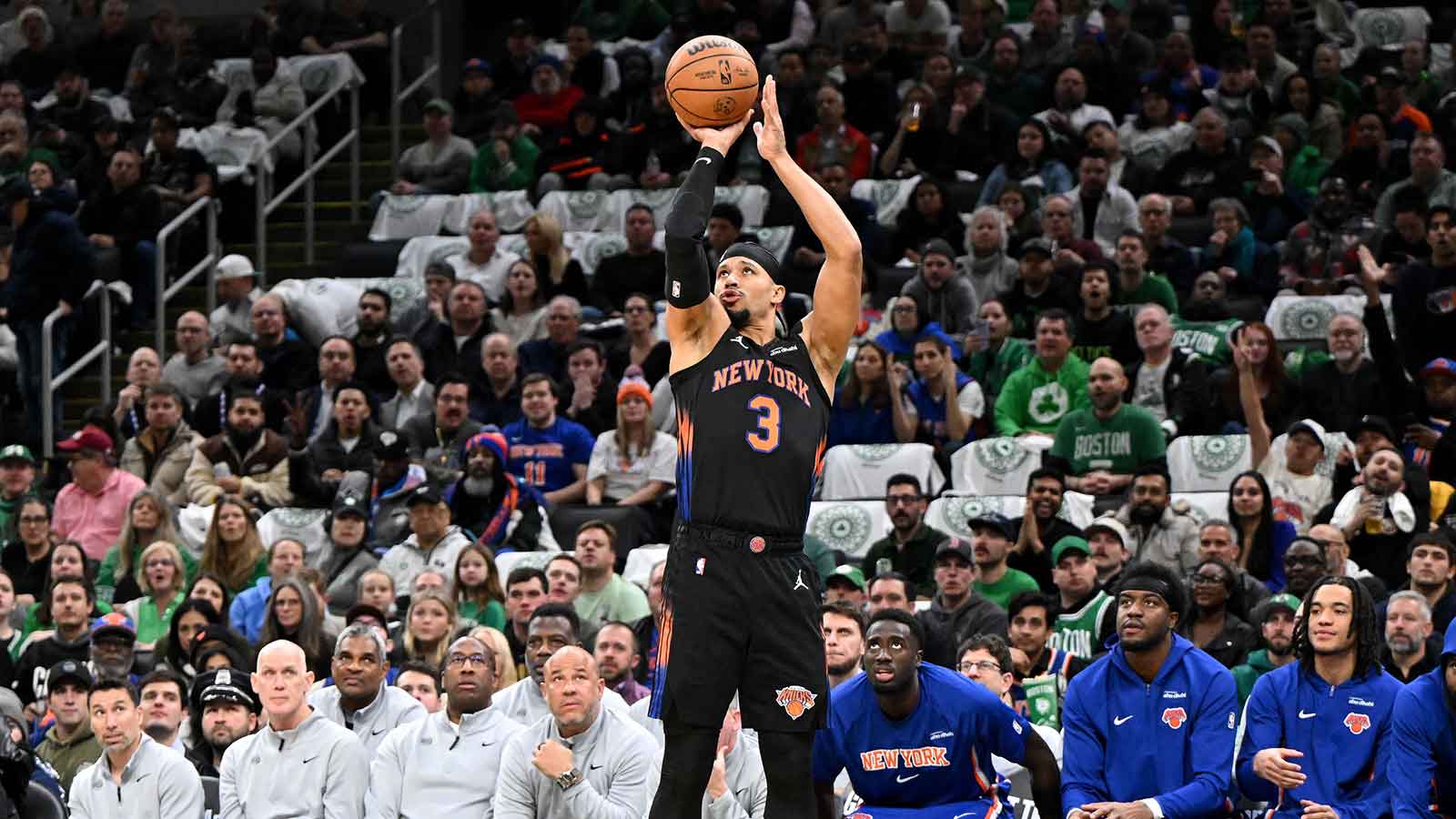For the first time in franchise history, the New York Knicks have lost the first two games of a playoff series at home, as the Pacers took a 2-0 series lead on the road Friday night with a 114-109 victory.
The Knicks' starting lineup's 25:50 of court time in Game 1 could be summarized by its 167.4 defensive rating. Indiana outscored New York 77-61 when all five of the Knicks' starters were on the court at once. Asked before Game 2 about the opening lineup consistently losing their minutes, Knicks coach Tom Thibodeau said that the data was too noisy to judge the group with.
“It’s hard to look at it that way,” Thibodeau told reporters pregame. “There’s a lot of mixing and matching. They’re with the second unit, as well.”
Reporters asked Thibodeau extensively about the minutes during which all five Knicks on the court are starters. The starters' plus-minus was indeed calculated by their performance against both the opponents' starters and bench players. But the trend has undeniably been that the Knicks' starting lineup is often their worst lineup.
Game 2 was a disappointingly similar story for the home team.
The Knicks ran their starters for 16:48 on Friday night. The Pacers outscored them 44-31 in that time. This was the Knicks' worst lineup of the game by plus-minus.
The starting five that consists of Jalen Brunson, Mikal Bridges, Josh Hart, OG Anunoby, and Karl-Anthony Towns has played 308 minutes in the 2025 NBA Playoffs. This is more than any other lineup – from any other team – including those that have been eliminated. They have a -9.5 net rating in those minutes.
Simply put, there are five Knicks lineups from this postseason that have played more than 30 minutes. The only one with a negative net rating is the starting lineup.
Bridges was asked postgame about the Knicks' starting five having lost their minutes over the three different series by 81 points, but didn't have an answer for the disparity.
“Um, I'm not sure, man,” Bridges said after a 20-point performance in Game 2. “I think it's, uh, maybe a defensive thing? I got to see.”
Seemingly aware that he hadn't given much of an answer, Bridges gave the question some more thought.
“I think we just got to talk to each other off the jump, be physical off the jump,” Bridges continued. “I think maybe we just play a little too soft in the beginning of the halves? Yeah, I'm not sure.”
Concerns about ‘soft' play to open halves are fair, given how often the Knicks open games in a hole. But 96 games into the season, it's just as fair to wonder what the Knicks can possibly do from here.
How key lineup changes can help Knicks' comeback chances
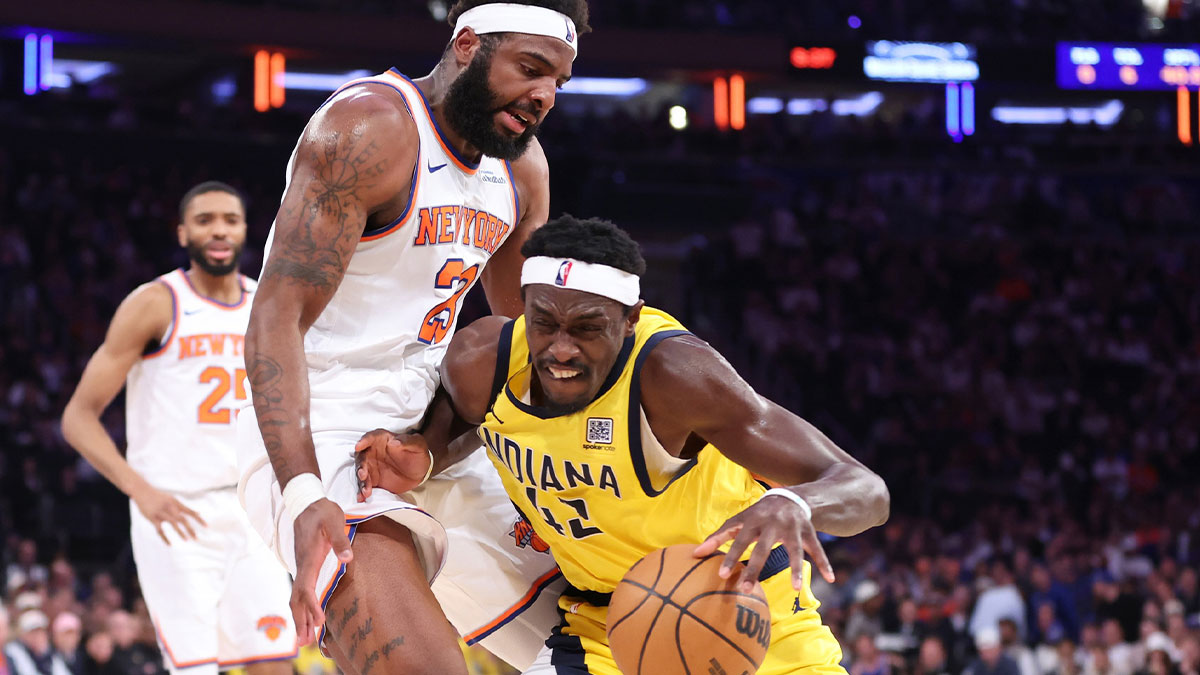
The Knicks' starting lineup consistently producing a point deficit does not automatically justify a lineup change. But the several alternatives out-producing the starters might.
When Brunson, Bridges, Hart, and Anunoby play alongside Mitchell Robinson instead of Towns, the group has a +3.8 net rating over the 49 minutes it has played in the postseason. This is not evidence that Robinson is a better player than Towns, but rather additional proof for New York that the fit just isn't there for its opening lineup.
The Knicks' best lineup in Game 1 featured Deuce McBride, Robinson, Hart, Anunoby, and Towns. This lineup played 5:05 and won those minutes 17-6, with a 188.9 offensive rating and a 66.7 defensive rating. Unless you're on either of the Eastern Conference Finalists, you – the reader – played as many minutes in Game 2 as this lineup did. None.
Towns played just 27:41 on Friday, with Knicks Head Coach Tom Thibodeau opting to sit him for the majority of the fourth quarter. Reporters asked Thibodeau about this postgame, and the coach told the truth.
“We got in a hole,” Thibodeau responded. “And then the group that was in there gave us a chance. So we [were just] riding that, just searching for a way to win.”
How and when did Game 2 start going wrong for the Knicks?
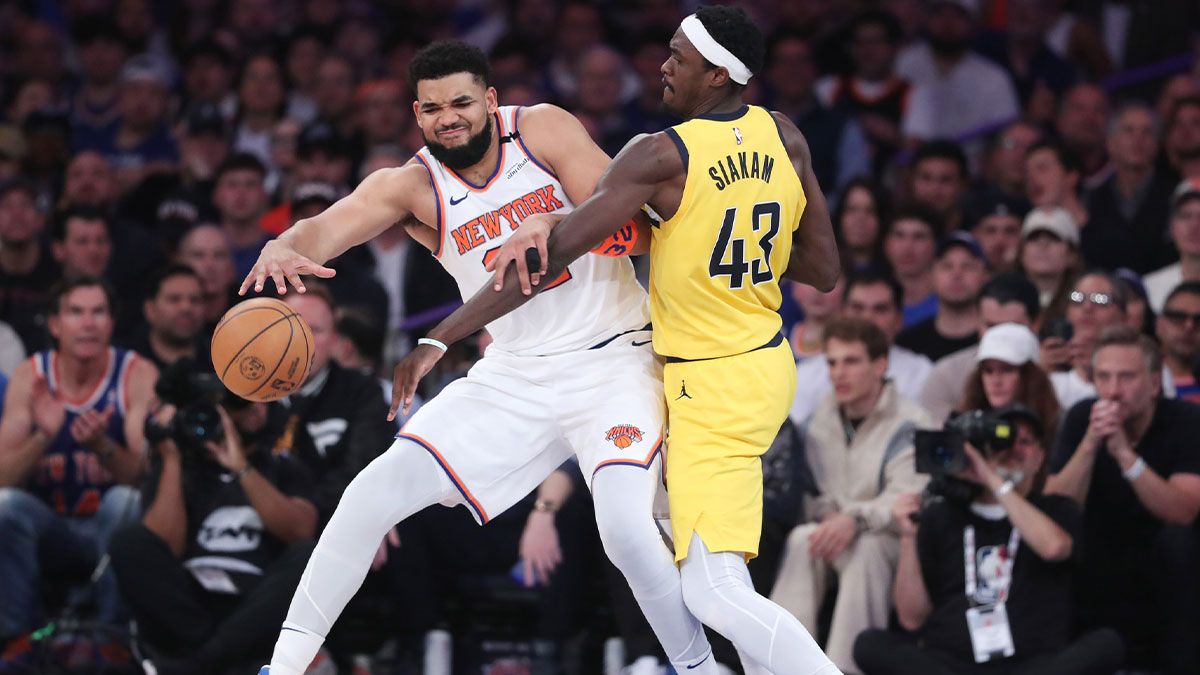
Thibodeau took a huge risk by sitting Towns for as long as he did. It was not why the Knicks lost the game. Towns and Robinson played 9:01 together in Game 2. Indiana won those minutes 27-18. Their fast pace and personnel make them a tough group to deploy the ‘double-big' lineup.
The Pacers led 19-9 with 5:19 left in the first quarter because Pascal Siakam torched the Knicks' starters for a quick 11 points. The Knicks subbed in McBride and Robinson and went on a 17-5 run to end the quarter.
The Knicks took a three-point lead into the second half, which was a five-point Pacers lead with 4:45 to go in the third quarter. No Knicks reserves played during this stretch and the Pacers outscored the starters by eight.
Regardless, the Knicks had the game evened up at 81 heading into the fourth quarter. But starting the quarter with Cam Payne on the floor helped the Pacers take an eight-point lead in just three minutes.
The Knicks' starting lineup with Robinson in for Towns was far from infallible. The Pacers outscored them 10-3 in just two minutes, starting from when there was 4:25 remaining in the fourth quarter.
But the point remains that while the Knicks went further away from their starting lineup in Game 2 than they had all postseason, they didn't fully capitalize on it by deploying their best personnel groupings for as long as they could have.
Throughout his tenure as an NBA Head Coach, filtering out lineup changes made due to injury – or a player having recovered from one – Tom Thibodeau has never changed his starting lineup during a playoff series if his team was ahead. He has never once changed his starting lineup when tied with his series opponent. He has only ever changed his starting lineup when losing a series or when something related to his players' health has changed.
The Knicks making a change to their starting lineup might not win them the series. But could a move like inserting McBride into the starting lineup, pairing rebound-monsters Hart and Robinson off the bench, help them put their best foot forward?

